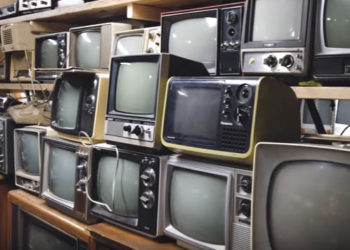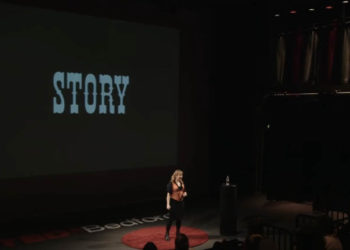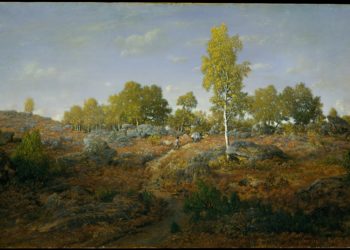In our digital age, the value of the physical act of writing is slowly being recognized. Studies have shown that the manual encoding required in writing notes by hand (rather than typing them into a computer during a lecture) improves retention. That extra step of translating what you’re hearing into a physical action seems to reinforce the information.
And, as schools continue to do away with any educational programs that don’t contribute to standardized test scores, cursive writing has largely been dismissed as something children are expected to learn. Which has begun to make cursive writing a novelty, something fun, an extracurricular activity sought out by children.
In the video below, we see the return of the manual typewriter as an object of fascination. What’s interesting about the classes taught here is that the practice is seen as a manifestation of mindfulness — because you can’t immediately delete what you’ve typed, you have to slow down, pay attention, and carefully compose it. Does this foretell a return to the glory days of carbon paper? Probably not, but perhaps there’s a lesson here in how the fastest response is not always the best response.
Discussion
7 Thoughts on "What’s Old is New Again: The Lost Art of Typewriting"
Wow, a flashback to my college days, I just saw my Smith Corona electric typewriter again from 50 years ago.
I loved this – I bought a beautiful manual smith corona deluxe portable with a cute case for my 21 year old English Literature and Philosophy student daughter. She adores it and drove me mad by typing all through the Christmas holidays. I had a go and it took me right back to learning to type at school. It takes a surprising amount of finger strength and its a noisy business! 🙂
Is handwriting really any more “manual” than typing on a keyboard? Both are physical actions using the fingers. In a sense, typing heightens manual action, since it gets both hands and all the fingers involved (for most people!). I’m even more skeptical about the difference, cognitively, between typing on a computer keyboard and typing on a typewriter. Typewriters are slower and riskier for the error-prone, yes; I spent a lot of time using white-out and erasable paper. That’s why most people wrote any serious text in longhand, worked out the kinks, then typed it. Or they had it typed, and good typists don’t waste time ruminating about that next keystroke. Perhaps the real difference between handwriting and typing is the personalization of handwriting, the physical sensation of pencil or pen on paper, and the creativity that is possible in creating the letters, words, connecting arrows, and representative squiggles that help capture thought and understanding.
The NY Times article linked above (https://www.nytimes.com/2014/06/03/science/whats-lost-as-handwriting-fades.html) cites multiple studies showing that handwriting engages different areas of the brain than does typing, and it has been correlated with higher retention rates.
Yes, I suspected it might. Unfortunately, I can’t access the article.
I used to love it when I encountered an IBM Selectic typewriter with the letters on that ball that would jump around when I typed. The feel of the keyboard, with its raised individual letter pads, felt just perfect. It didn’t make my prose more effective, but it sure seemed like it at the time.
Glad y’all enjoyed the NBC piece on our Touch Typing classes at WPM typewriter shop in Philadelphia. The format of the clip didn’t quite allow time to explain that benefits accrue not just from Typewriting but also from Touch Typing specifically — typewriting without peeking at your fingers or keyboard. How else to copy a document without your head doing ping pong? Or conduct an interview without eye contact?
Thanks for hyperlinking to the NBC video. You may have overlooked mentioning the name of our shop.
Pamela Rogow
WPM TypewriterShop.com
http://www.wpmTypewriterShop.com


